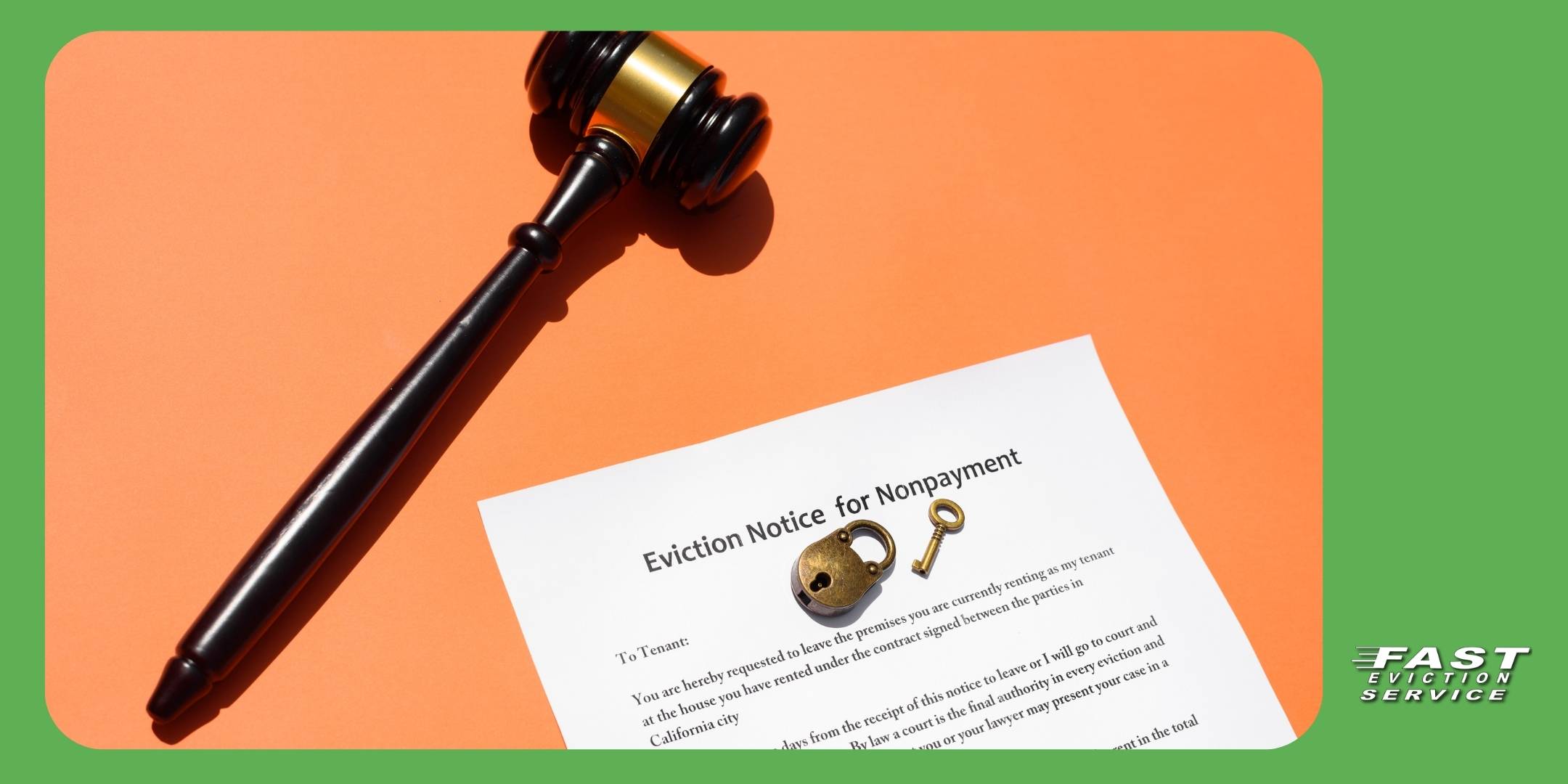When looking into why or how to evict a tenant who has failed to pay their rent or has broken part of their lease agreement, we often see the term “unlawful detainer”. What exactly does this mean?

What is an unlawful detainer?
An unlawful detainer is a legal term used to refer to a legal action or lawsuit filed by a landlord against a tenant who is occupying a property unlawfully or in violation of the lease or rental agreement. This typically occurs when the tenant refuses to vacate the property even after their lease has expired, or if they are engaging in other behaviors that violate the terms of the lease, such as causing damage to the property or engaging in illegal activities. In other words, an eviction.
The purpose of an unlawful detainer action in California is to regain possession of the property from the tenant and evict them legally. The process typically involves filing a formal complaint with the appropriate court, providing notice to the tenant, and allowing them an opportunity to respond. If the court finds in favor of the landlord, it may issue an order for the tenant to vacate the property, and law enforcement may be involved to enforce the eviction if the tenant still refuses to leave.
What is the procedure for an Unlawful Detainer in California?
Important: This shouldn’t be considered legal advice and is a rough, general outline of the eviction process in California. Local, State and Federal eviction moratoria should be considered before taking any legal action. Please contact us for precise information regarding your specific case.
Notice
Before filing an unlawful detainer in California lawsuit, the landlord typically needs to provide the tenant with a written notice to either pay the rent owed, fix any violation of the lease or vacate the property. The notice period depends on the reason for the eviction, such as non-payment of rent or violation of lease terms.
File Unlawful Detainer in California
If the tenant does not comply with the notice and continues to occupy the property unlawfully, the landlord can file an unlawful detainer complaint with the appropriate court. The complaint outlines the reasons for eviction and the details of the case.
Serving Summons and Complaint
The tenant must be served with a copy of the summons and complaint by an authorized individual (usually a process server or law enforcement officer). This provides the tenant with formal notice of the lawsuit and the opportunity to respond.
Tenant’s Response
The tenant has a certain period (usually 5 days from the date of service) to file a written response to the complaint. If they fail to respond within this time frame, the landlord may seek a default judgment in their favor.
If the tenant files a response, the court will schedule a hearing. Both the landlord and the tenant must attend this hearing. At the hearing, both parties can present their evidence and arguments to the judge.
If there is a trial, the judge will listen to both sides and make a decision based on the evidence and the law. If the judge rules in favor of the landlord, they will issue a judgment for possession of the property and may also order the tenant to pay any unpaid rent or damages.
Writ of Possession
If the judge grants the landlord possession of the property during the unlawful detainer in California, they can obtain a writ of possession from the court. This writ is a legal document that allows law enforcement to physically remove the tenant if they do not voluntarily vacate the property after the court’s decision.
Enforcement of Eviction
With the writ of possession, the landlord can request law enforcement (usually the county sheriff) to carry out the eviction process and physically remove the tenant from the property.
An Unlawful Detainer in California is a Summary Court Procedure
An Unlawful Detainer Lawsuit is like a fast-track court procedure. This means things move quickly, and tenants don’t have much time to respond once they get the landlord’s complaint. Usually, they’ve got just five days to write a response after getting a copy of that complaint. And within about 20 days after the tenant responds, a judge usually hears and decides the whole unlawful detainer case.
Warning to landlords: this whole court eviction process guarantees tenants the right to a court hearing if they think the landlord’s got no good reason to kick them out. Landlords can’t just do things on their own to force tenants out – no removing them physically, locking them out, cutting off their utilities like water and power, or snatching their stuff. Nope, landlords have to follow the official court steps for eviction at all times.
What Can Happen if Landlords Force a Tenant Out Unlawfully?
Should a landlord resort to employing illicit tactics in order to evict a tenant, they could find themselves entangled in significant legal ramifications. These improper actions encompass activities like changing locks without adhering to the established legal procedures, terminating essential utilities, or unlawfully disposing of the tenant’s belongings.
Consequences for such behavior can be substantial. Notably, landlords may be held financially responsible for any adverse effects the tenant endures due to these wrongful practices. This financial obligation might encompass expenses like arranging temporary housing or replacing damaged or lost possessions.
Yet, the repercussions extend beyond mere financial liability. Legal measures can be taken against the landlord, potentially resulting in substantial penalties. These penalties could escalate up to a maximum of $200 per day for each day the landlord persisted in utilizing these unlawful tactics during the eviction process. The cumulative effect of such penalties can be financially burdensome.
Given these potential consequences, adhering strictly to proper eviction procedures is essential for landlords. Engaging in prohibited practices can lead to a detrimental combination of monetary loss and legal complications, making adherence to the established guidelines a prudent course of action.
Appealing an Unlawful Detainer Judgment
For landlords in California, the state’s eviction laws outline a crucial aspect concerning appeal procedures. If a landlord faces an unfavorable outcome in an unlawful detainer lawsuit, there is the option to challenge the judgment through an appeal. This is particularly applicable if the belief is that the presiding judge made an erroneous decision on a legal matter within the case.
It’s important to recognize that tenants also possess the right to appeal a judgment in the event of their defeat in the case. However, it’s worth noting that even if tenants opt for an appeal, they will likely be required to vacate the premises prior to the appeal process taking place. This is unless they successfully secure a stay of enforcement of the judgment or gain relief from forfeiture. It’s pertinent to understand that such occurrences are quite rare, as a stay of enforcement is only granted by the court under circumstances where the tenant and their family are deemed to face severe hardships, and the landlord would not undergo irreparable harm.
Should the court decide to grant a stay of enforcement, it will mandate the tenants to repay rent payments to the court, as specified in the court’s order.



